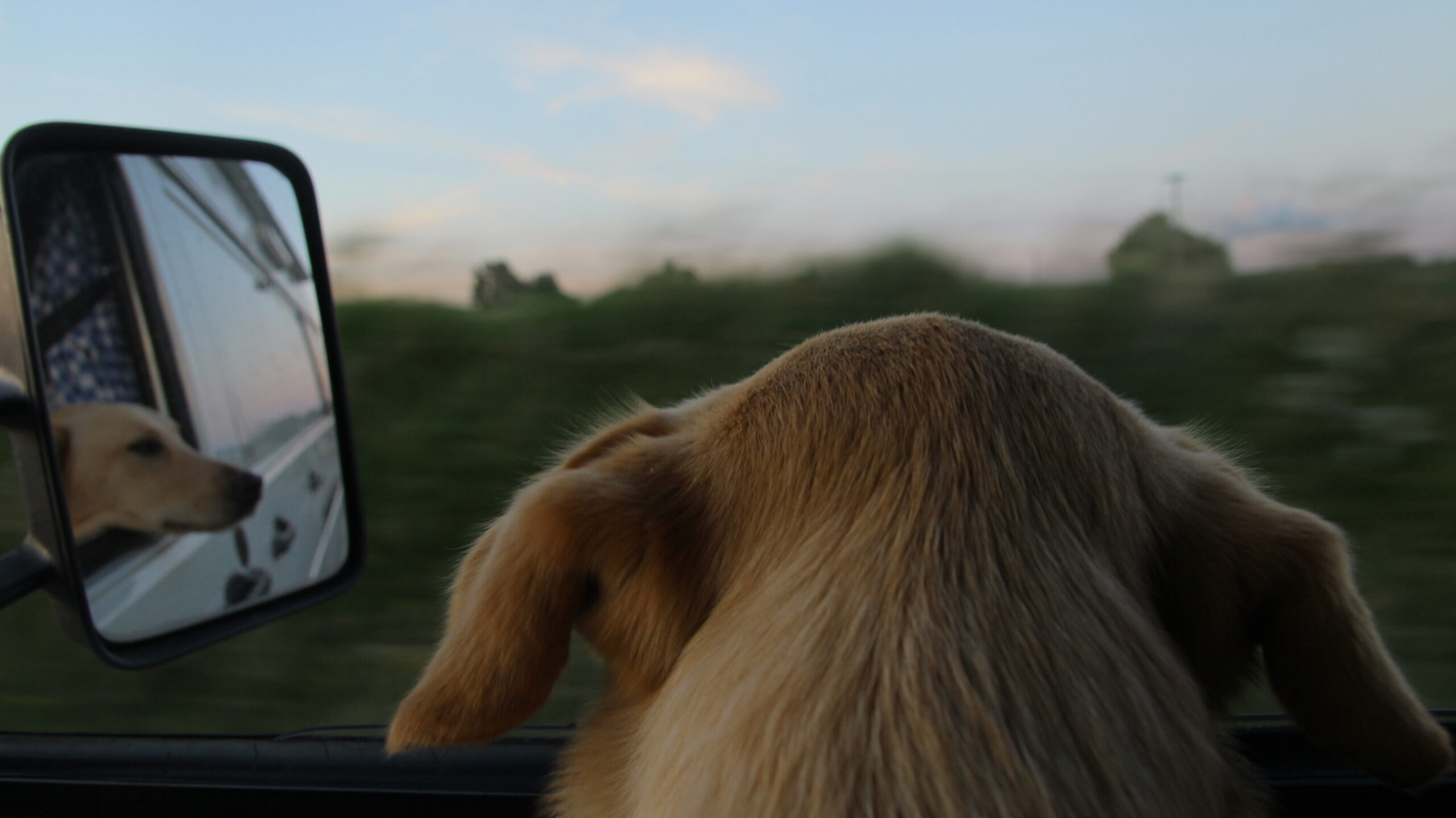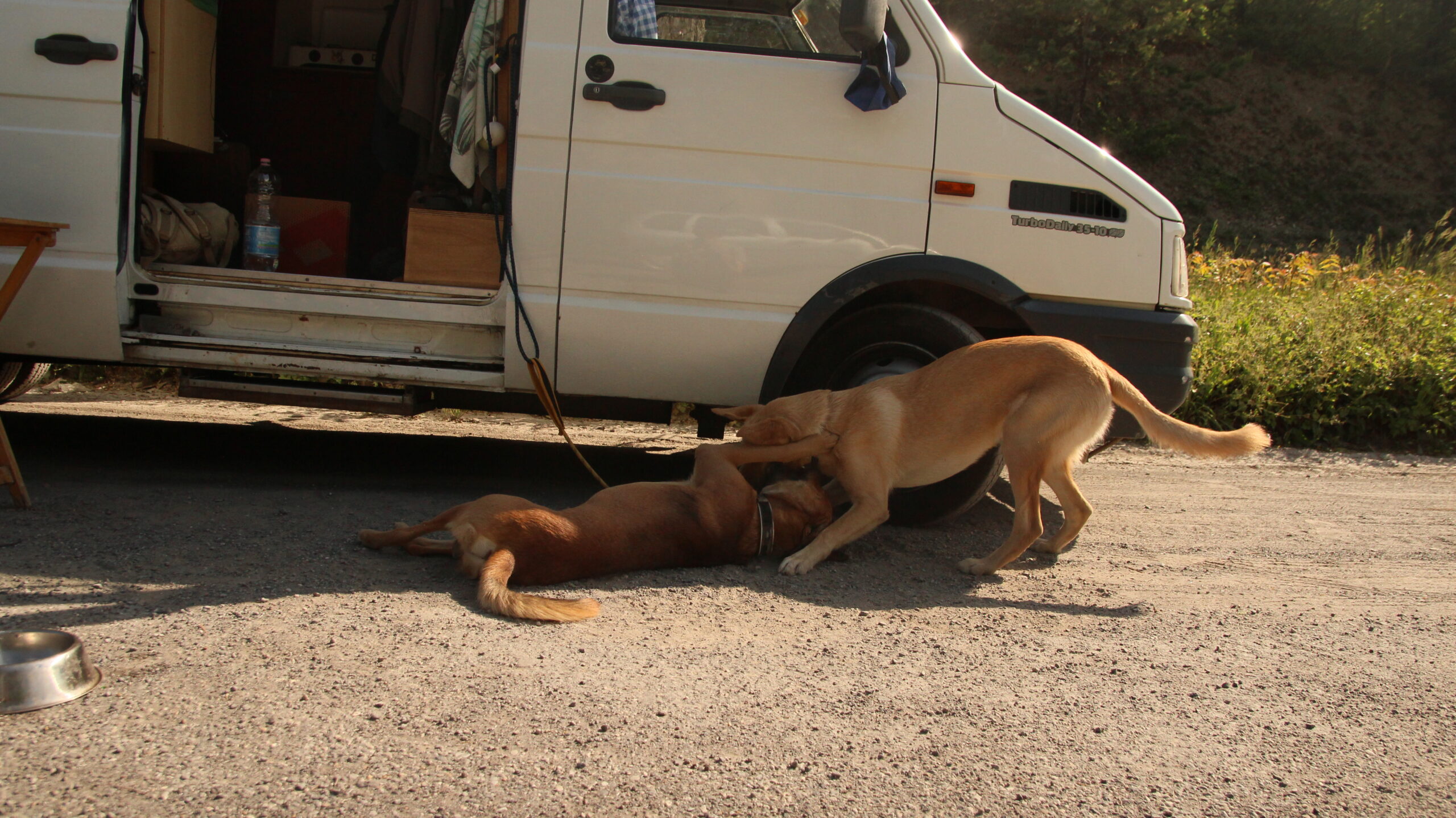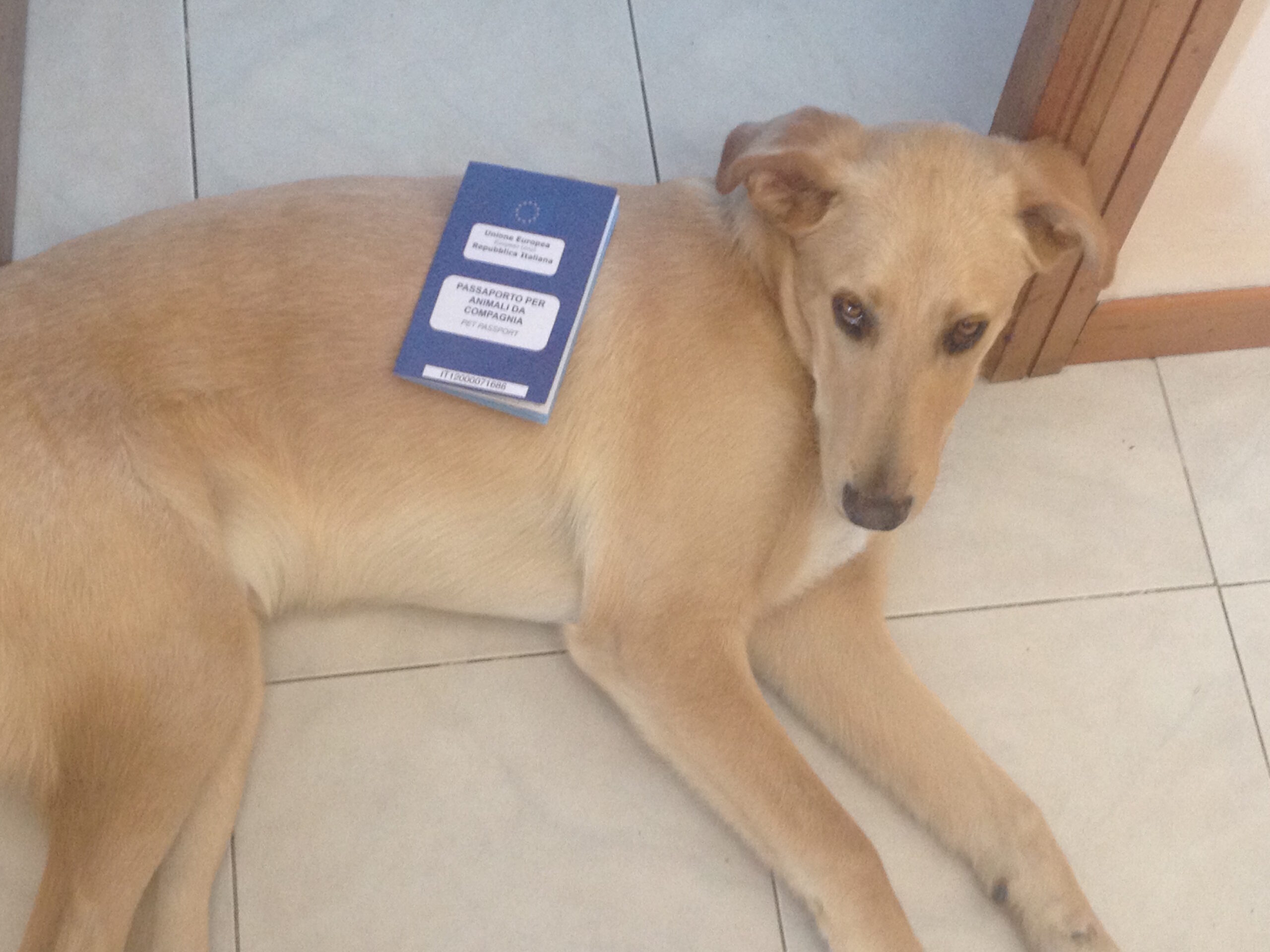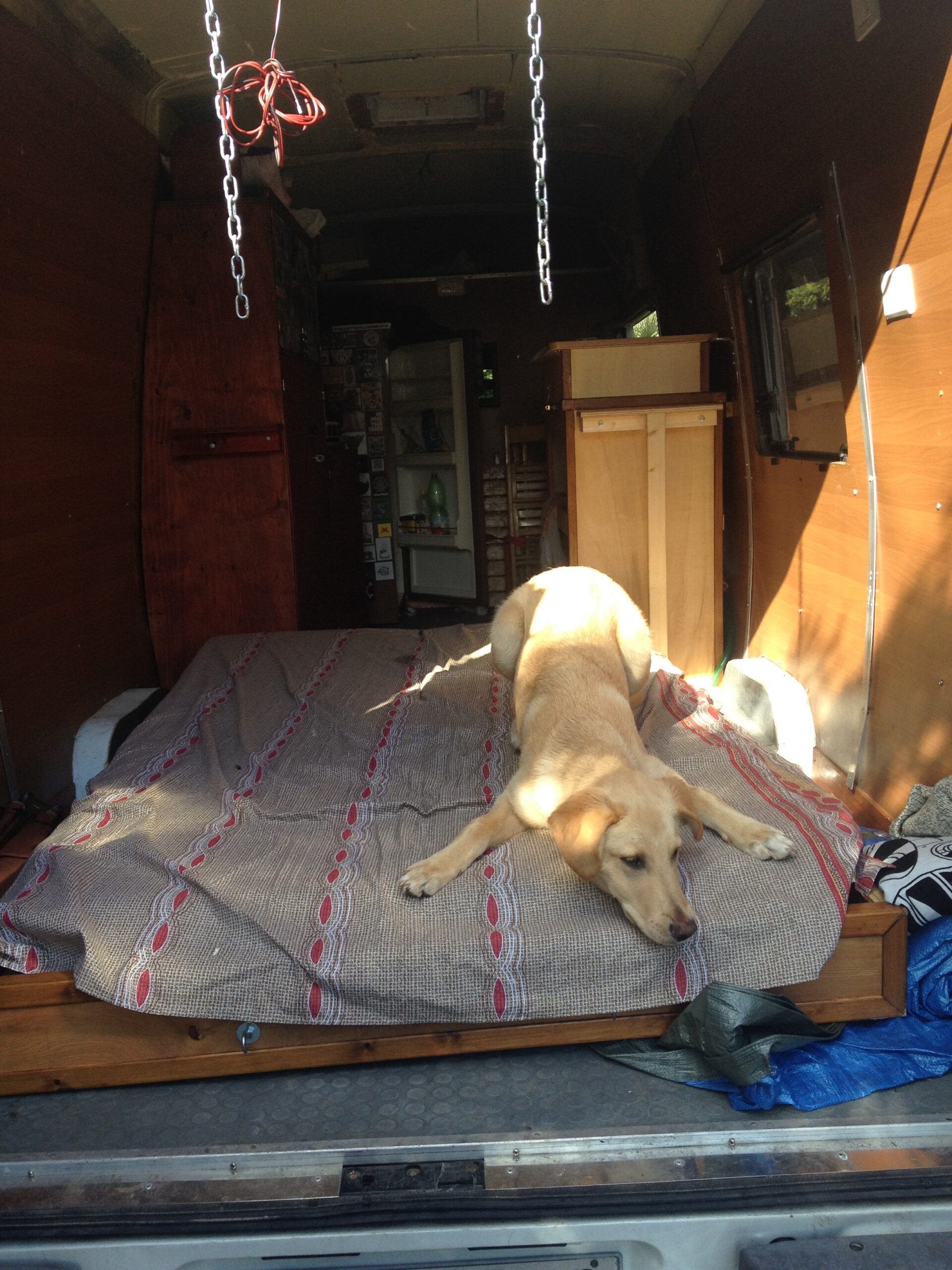Many travellers bring their fellow canine companion along on their journeys. When we started our first voyage in Eastern Europe and France we where doggy free but at the very end of the journey we fell in love to a beautiful white ball of fur. When we returned to France for Vineyard jobs he was still just a puppy, problem was, a large and lively puppy. We learnt a lot in those four months, yes the joy of waking up with your dog licking your face is one of a kind, but there are many complications that can occur but also managed quite easily. Before departing Maybe the most important thing is getting your dog a Passport, this is required by law. In Europe a Passport not only shows that he is your “property”, but also indicates that he has had an anti-rabies vaccination. I’m not sure how it works in other countries but to apply for one in Italy, you need to get him the anti-rabies shot, then go to the local ASL office where they specialize in providing documentation for animals. Once you have it, there is a wait of 21 days after the shot to leave the country. If travelling out of Europe for example to Morocco by ferry you need to inform the Moroccan Embassy that you have intention to do so. Also remember your dog must have a micro-chip. Read about your countries regulations at least a couple of months before your planned trip.

When on route.
When travelling always remember your dog’s needs, he or she needs to eat, drink and go to the toilet as much as you do, if not more. Usually when on a long journey there aren’t always places where you can leave your dog running free, of course this also depends on how well-trained your pet is, but in our case we had to take him for long walks around the camper until he would find the perfect place for his duties. After your pit-stop remember to clean up after your dog, don’t leave a mess on the road. Parking. When looking for parking it’s always important you find a place where your dog can roam free a bit especially when staying the night. So maybe, if you have the chance, stop close to parks or big open spaces with as few roads as possible in the vicinity. First thing in the morning it’s always best to be close to a space where your pet can get out, let of some steam, and do their duties. Depending on how you’re travelling determines the level of difficulties you are likely to face. If travelling by car and tents life can get a bit messy especially on rainy days, if you chose this way or had no option do not be put off, one thing I would advise would is to have a tent that has enough space for him as well, if not this will result with you and your dog being sleeping partners (it will be uncomfortable but might warm you up during cold winter nights). If travelling by camper-van life is so much easier, your dog will soon adapt to the space and find a sport where to sleep unless you have already made up his own enclosed bed. Of course, your dog can make a mess in any space you have, so always ensure you have a towel exclusively for him/her and keep it close to the entrance, on rainy days always clean his paws when letting him back inside. One important caution I would make is regarding “chewing”. Thankfully my dog has grown out of it and has never munched on anything important especially in the van, but I have friends with dogs that will chew on almost anything and that can result in serious problems, both for you and dog.

Items to take.
Long rope or chains. The rope you might use to tether your dog is never enough, I speak from experience of having a curious and strong dog, who broke a few ropes, collars and also a harness. I always bring a variety of rope for any kind of issue but sometimes, when you can’t let your buddy go free yet still want to give him some extra space be sure to tie him to a long piece of rope to something strong, like the wheel. If your dog is one of those munching dogs mentioned earlier, then you might want to consider a metal chain.
Collar with Phone Number. Many put tags on their dogs which can be practical when in your own country or when travelling for a short period, but for those who stay out abroad for longer periods I would advise something that can be changed especially when getting a foreign Sim card. For example we have sawn a piece of white material on our dogs collar so we can add numbers when we head off to other countries, this is a bit of a drastic measure, you can find capsule tags with changeable pieces of paper but our dog continuously looses them.
Harness. These might be fundamental in your daily routine taking your dog for walks, mine for example gets frustrated when he sees dogs in the distance and tends to pull a lot, with a harness its easier to control him.
Ventilation. This is really important especially if you need to keep leave your pet in the vehicle for a few hours. I would advise having a roof vent so it keeps the air flowing in, also on sunny days we tend to keep the fan running inside, this is only possible if you have solar energy.
Towel. Have a towel exclusively for your dog, you will need it on rainy days it will help not getting your mobile home absolutely filthy.
Flee Collar. Many owners apply products on their dogs for flees, and more but every time I tried it never worked well for long periods, after a few days I would keep finding them. Eventually I bought a flee collar and that seemed to do the job. Of course these “treatments” aren’t ideal for the dog’s health but flees and ticks can cause even more harm.
A bed. Some people have made their dogs an enclosed bed in their vans but in our case we don’t have enough place to make one separate, so we have a resistant pillow that acts as his bed, but he rarely uses it on hot days.
Brush and Fur collector. Your dog generally looses fur especially when changing season and this can get very messy so I would advise to brush him a couple of times every day with his own personal one. Also a fur collector is useful to efficiently remove fur from interior surfaces, using a hoover never seems to do the trick.
Food. Big sacks of food! If you know where to get a good quality food bag in your country then pick up a few, you never know how much dog food will cost elsewhere. Passport. Obviously your dogs documents are very important.
Disinfectant and Propolis. Your dog might get into fights or get hurt, so always have disinfectant or Oxygenated water and apply as soon as you notice the cut, then after making sure bleeding has stopped, apply some propolis for an extra layer of protection, this usually works efficiently but make sure your dog doesn’t lick it off (its perfectly safe for him but if he gets rid of it it’s pointless).
Bowls. Have at least two or three bowls for his food and water, try to get large and stable so as not to tip over while driving.
Heating. In cold seasons your dog might get cold. On these occasions we usually make a small shelter where to sleep. We have a mountable dogs hut which is perfect for cold seasons.

Crossing the “borders”.
Not many countries require passports or rabid shots for your dog but if you are crossing borders you should have them done just in case. Between France and Italy. I have never had any problems nor document checks for my pet on any border between these two countries. Italy/Spain by ferry. When buying tickets the requirements for taking your pets are: it needs to be microchipped and you need to have a “buona salute” (good health) prescription from a vet.As we travel we will keep adding information on what needs to be done to take your fellow companion abroad. As always remember these are my personal suggestions and tips based on past experiences of travelling with my dog, though everyone has their own ways and methods to deal with their pet. If there are any further questions, please add comments below and we will try to get you an answer as soon as possible.



This is the right website for anybody who wants to find out about this topic. You understand a whole lot its almost tough to argue with you (not that I personally would want toÖHaHa). You definitely put a new spin on a topic which has been written about for years. Excellent stuff, just excellent!
I need to to thank you for this fantastic read!! I certainly loved every little bit of it. I have got you book marked to check out new stuff you postÖ
May I simply just say what a comfort to uncover an individual who actually knows what they are talking about on the internet. You definitely realize how to bring an issue to light and make it important. More and more people have to look at this and understand this side of your story. Its surprising you arent more popular because you surely possess the gift.
Itís difficult to find experienced people for this topic, but you seem like you know what youíre talking about! Thanks